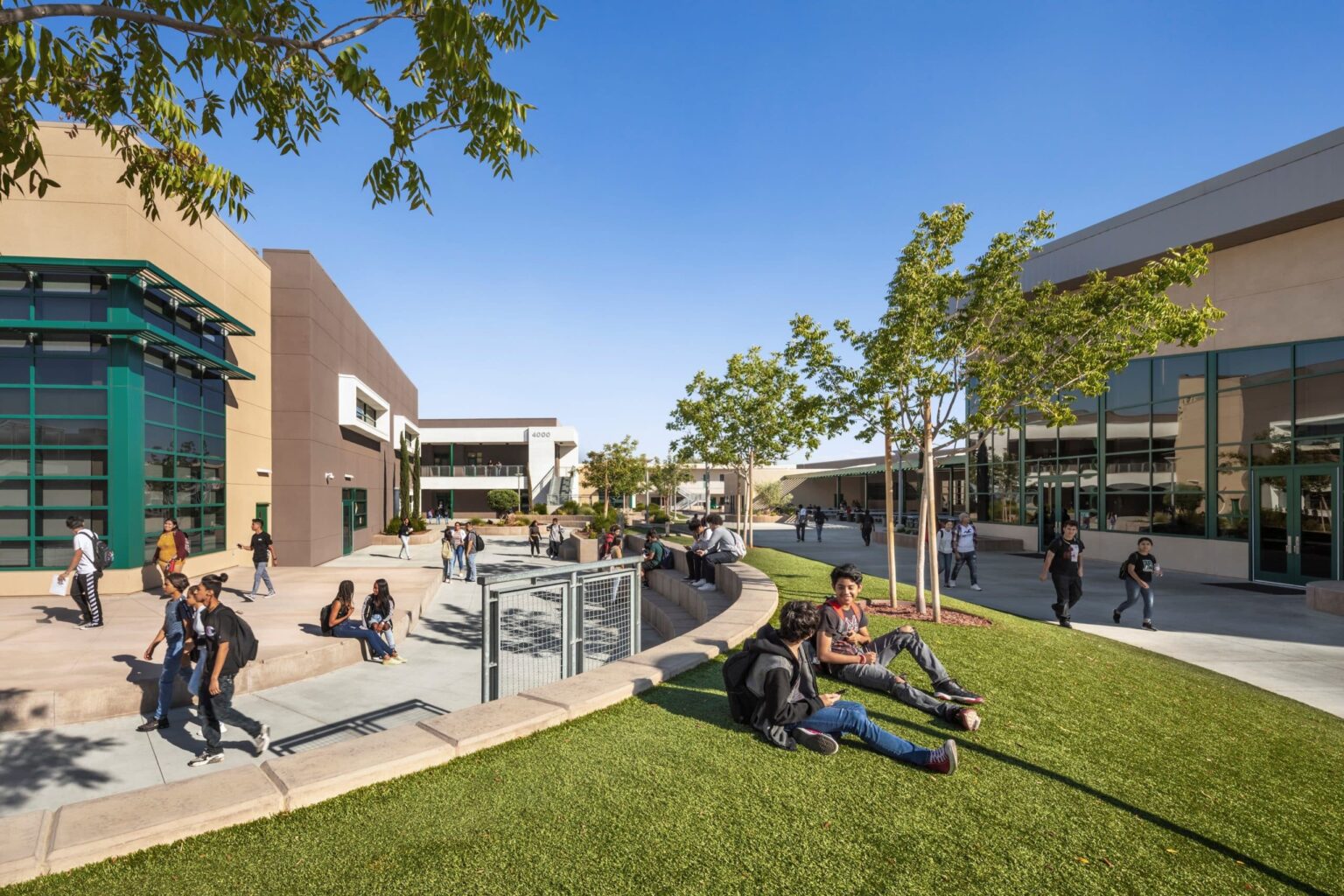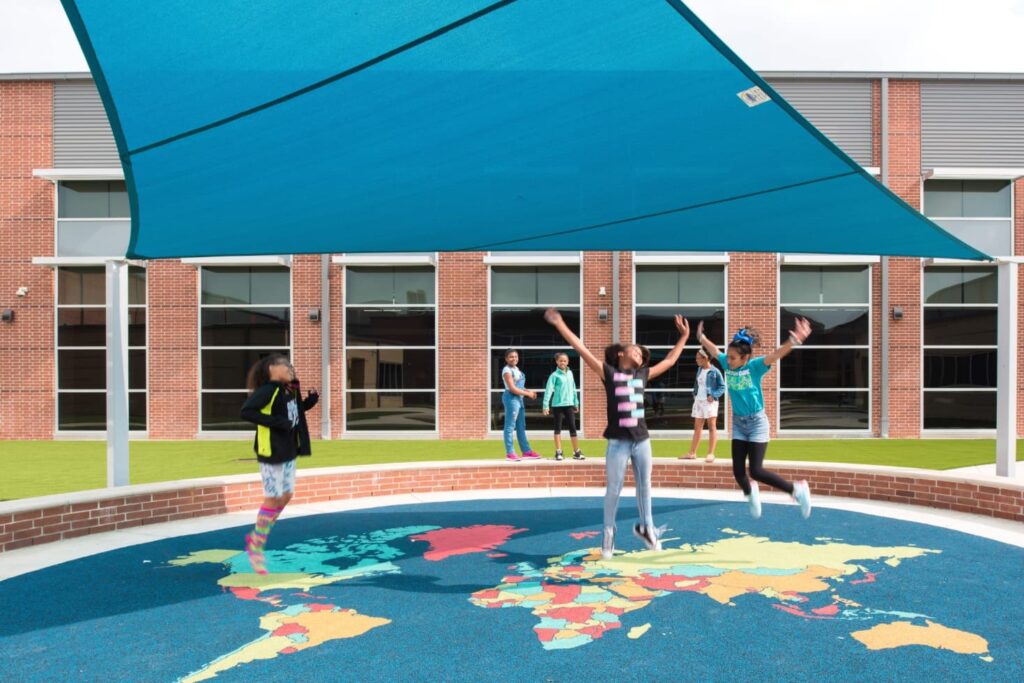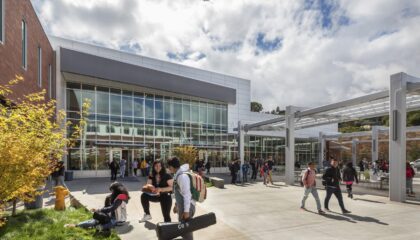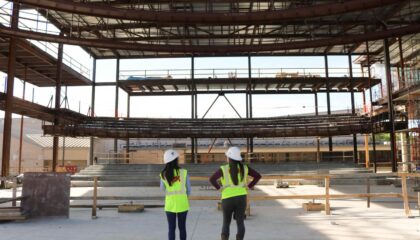Innovation
Thinking Outside the Classroom

By: Melissa Turnbaugh, Principal & Rebecca Luman, P.E., LEED, AP BD+C, Healthy Tweaks LLC
Technology continues to redefine the educational experience; nature is the constant.
Today’s learners are increasingly engaging with digital platforms, particularly in light of the Covid-19 pandemic. However, this increased screen time comes with a risk. In 2020, educators and students reported “screen fatigue” after the shift to remote learning. Conversely, time in nature was recommended as a break from screen time to maintain mental and physical health, and to serve its purpose as a teaching tool, as it has for over a century. Not only does outdoor activity positively impact the individual; gathering outdoors is an innovative solution for teaching in groups, allowing for continued social contact while social distancing, and providing a fundamental educational experience.
In our modern world, taking learning outdoors may at first seem contradictory to the efficient and dynamic technology used in modern schools; however, technology and nature can, and must, co-exist in the educational experience. Balancing classroom technology with the inspiration that only hands-on, active learning outdoors provides enhances the benefits of each. Getting students outdoors stimulates the senses, encourages physical activity, promotes mental wellness, and instills an appreciation of nature, all while effectively providing developmentally appropriate learning.

Outdoor learning spaces, natural schoolyards or green schoolyards can mean a number of things. The Children & Nature Network, a leading organization in the research and advocacy for this type of learning environments defines these spaces as “multi-functional school grounds designed for and by the entire school community.
Examples of these types of spaces can include: Outdoor Classrooms, Native and Pollinator Gardens, Storm Water Capture, Traditional Play Equipment, Nature Play Areas, Edible Gardens, Trails and Walking Paths, Trees and Shrubs)
Outdoor Learning Improves Health & Wellbeing
Outdoor learning promotes and provides opportunity for students to engage in physical activity. Why is physical activity important.
- Physical Development
Physical activity impacts developmental processes, structural and functional brain maturation, as well as physical psychosocial and mental health. Physical Activity is also strongly related tot he mastery of fundamental motor skills in children and adolescents and may in turn contribute to physical, social and cognitive development.
Outdoor learning spaces promote physical activity through curriculum that incorporates play and movement. Additionally, these natural environments can impact entire communities by providing a spaces after hours for physical activity in traditionally underserved neighborhoods where families may not otherwise have locations in which to exercise. - Psychosocial Development
Learning in nature supports improved relationship skills. Research has linked outdoor activity in nature-based schoolyards with more cooperative play, civil behavior and positive social relationships displayed among children. Additionally, findings support the assertion that the use of outdoor learning environments contributes to the development of self-awareness and self-management, reducing aggression and discipline problems and helping students feel proud, responsible and confident. - Mental Health
Learning in natural environments can significantly improve students’ mental health. Children who live near trees and other greenery are shown to better cope with stress. Exposure to nature enhances positive and decreases negative emotions and also improves feelings of competence and increased supportive social relationships that help build resilience.
Outdoor Learning Improves Academic Outcomes
According to national education statistics, only 1/3 of U.S. 8th graders perform at or above standards of proficiency for science and math. Schools across the nation are seeking ways to improve academic outcomes for all students.
Intentionally designed outdoor learning environments promote academic achievement by enhancing the cognitive and emotional processes important for learning. Physical and mental health are both positively linked to academic performance and outdoor learning supports both.
Spending time in nature has been proven to help children focus their attention. In fact, the more natural the educational setting, the better the focus. Even simply seeing nature from school buildings can foster academic success.
In one study, 94% of teachers report that students are more engaged in educational experiences utilizing outdoor learning labs than in traditional classrooms. In another study, 33 of 40 (83%) of participating schools reported improved outcomes in science, math and language arts. Students performed better on standardized tests and had better overall grades. Nature-based schoolyards have also been shown to enhance attitudes and engagement with the school and support creativity, critical thinking and problem solving.
Outdoor Learning Improves the Community
Not only do intentionally designed outdoor environments positively impact learners, they also enhance entire communities. Research shows that in low-income neighborhoods, outdoor learning spaces at local schools help address green space disparity in the community and provide public access to space for exercise, exploration and family activity.
Access to nature can become “the great equalizer,” providing free, universal benefits of recreation, physical activity, fresh air and exposure to the outdoors in communities that are traditionally underserved.
Outdoor Learning Improves Environmental Awareness
By engaging children with the natural world, outdoor learning environments foster environmental literacy and care for nature. Meaningful outdoor experiences inspire children to develop stronger connections to both the natural world and the people around them. According to the Children & Nature Network, children who are connected to nature have better health, higher satisfaction with life, and pro-environment behaviors.
From an operational perspective, intentionally designed outdoor learning environments provide numerous benefits. Cultivating the natural ecology of a space reduces the frequency at which the area must be mowed and maintained, which can in turn improve the surrounding air quality. These green spaces can also provide an alternative to large, paved spaces, reducing the urban heat island effect and in turn, minimizing costs of cooling the school building. Finally, allowing nature to propagate on a schoolyard increases the biodiversity of the area, allowing students to witness the return of native species to the area.
Organizations dedicated to advocacy for the benefits of outdoor learning environments in today’s schools have been engaging stakeholders in meaningful discussions for decades. In 2020, The National COVID-19 Outdoor Learning Initiative collaborative formed and developed a library of tools for creating outdoor learning environments during the pandemic and beyond. School districts, non-profits, state agencies, and other entities are now, more than ever, working together to provide funding and resources for planning and effectively using nature for all its multiple benefits.
The information above is based on the following resources:


